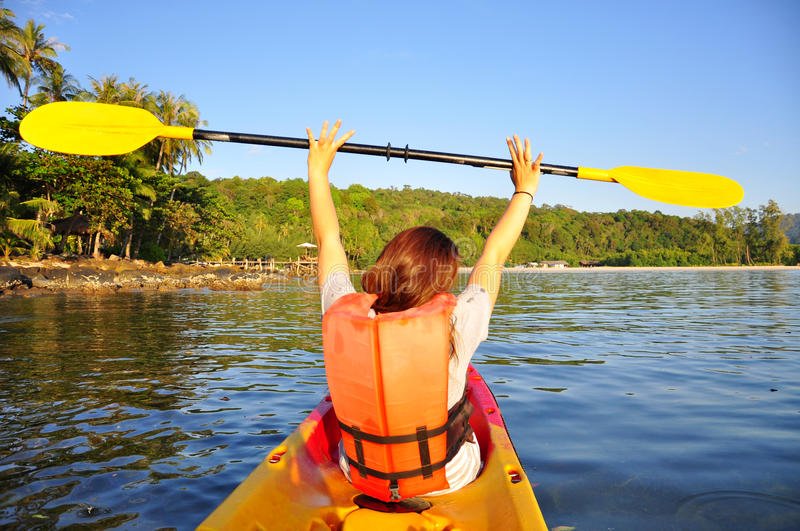==================
Florida Splendors is supported by our audience. When you purchase through one of our links, we may earn a small affiliate commission. As an Amazon Associate I earn from qualifying purchases. Your cost is not affected.
Embarking on the thrilling journey of choosing the perfect kayak can be a daunting task, especially when faced with the myriad of options in the market. Among the contenders, most inflatable kayaks stand out as a popular choice, offering portability and ease of storage that traditional hardshell kayaks struggle to match.
However, the landscape is not without its challenges, as many inflatable kayak manufacturers flood the market with varying quality and performance. The battle between the convenience of an inflatable design and the stalwart stability of hardshell kayaks raises critical questions about its durable materials, and overall user satisfaction. Navigating through these contrasting features becomes a pain point for prospective buyers, as they weigh the pros and cons to find the ideal vessel for their aquatic adventures.
Pros and Cons of Inflatable Kayaks
Your adventures can take you through rough waters when you are out kayaking. It means it’s essential to have reliable inflatable kayaks that can support you, making the safety of inflatable kayaks a top priority for most kayakers. With the best inflatable kayaks, you can have peace of mind no matter how difficult the journey may seem.
The inflatable kayak means convenience, allowing you to navigate challenging waters with surprisingly good stability and performance. There are many pros and cons of inflatable kayaks, including the efficient use of storage space, an aspect that sets them apart from other kayaks. The availability of roof racks and repair kit adds to the versatility, making them a sensible choice for outdoor enthusiasts.
However, the vast array of options from many inflatable kayak manufacturers introduces a challenge in finding the ideal vessel with the main features that make sense for your specific needs.
What Is An Inflatable Kayak?
-
Easy storage
-
Easier transportation
-
All accessories available for installation
What Are Inflatable Kayaks Made Of?

How Good Are Inflatable Kayaks?

Pros Of Inflatable Kayaks
-
They can last longer than solid kayaks. After all, they have a flexible exterior that resists the harshness of the elements.
-
It includes a high weight capacity. So, it’s easy to bring your friends and family along for the ride! Still, you can use it to exercise when you’re overweight or obese for better health.
-
They come with a shallow draft.
-
They are less expensive than traditional hardshell boats. Yet they are upgradable. For instance, you can attach a floating cooler to them to travel and transport items at the same time.
-
You can use them in shallow waters. Their 3-chamber construction makes it possible.
A kayak for obese person needs to have a higher weight capacity and a broader design to ensure stability and comfort while paddling. But a typical inflatable kayak has a weight capacity between 400 and 750 pounds. Hence, it’s suitable for heavy people. Also, when a kayak’s weight surpasses the allowed limit, the boat’s performance suffers significantly. Because of this, it will be more likely to topple over.
Still, a folding frame kayak is easy to move and store because it is small. This makes it an excellent choice for kayakers who only have a little space to store their gear or who like to take it with them when they travel.
Cons Of Inflatable Kayaks
-
Getting into and out of it can be complex and less stable than hardshell kayaks.
-
These vehicles are slower than other options on the market.
-
They are easy to puncture if hit by rocks or sticks while in shallow waters. Leaks inflatable kayak models sustain can turn worse.
-
Their design comes with durability issues. This is true for the single and tandem kayak.
-
They travel at lower speeds.
-
Their motion is less efficient in rough waters compared to hardshell boats.
Inflatable boat disadvantages exist too. But make sure to use expandable kayaks. They continue to serve a purpose and provide a pleasant user experience.
Safety Tips
-
Never leave it outside in direct sunlight. Doing so will weaken it over time. Observe proper storage techniques to make your boat last longer.
-
Always inspect your boat after going on a trip.
-
Deflate the kayak as soon as possible when there is a puncture. It’s to prevent the hole from getting more significant.
-
Refrain from using sharp objects when inflating your kayak. They can pierce your vehicle.
-
Keep your inflatable boat away from high heat sources such as fire pits or grills.
Video Credits: @inneradventures
Learning About Inflatable Kayaks
If you’re planning a kayaking trip in Florida, don’t miss these 10 tips on how to stay safe while kayaking to ensure you have a safe and enjoyable time on the water. From wearing a life jacket to checking the weather forecast, these simple precautions can significantly prevent accidents and ensure a successful outing.
Frequently Asked Questions
What's Inside
- Inflatable Canoes? How Does a Blow up Canoe vary From a kayak?
- Do Inflatable Kayaks Work on Rough Waters?
- Inflatable kayaks can handle rough waters depending on their design, size, and material. Inflatable kayaks for lakes and calm rivers differ from those for whitewater and rapids.
- Are There Any Specific Maintenance Requirements for Inflatable Kayaks?
- Can Inflatable Kayaks Be Used for Different Types of Water Activities?
- Should I Get An Inflatable Kayak?
- Do Inflatable Kayaks Burst?
- Is It Hard To Get Into An Inflatable Kayak?
- Is An Inflatable Kayak Self-Bailing?
- Are Inflatable Kayaks Durable?
- Are These Kayaks Susceptible To Puncture?
Inflatable Canoes? How Does a Blow up Canoe vary From a kayak?
Inflatable kayaks are perfect for recreational paddlers who need a lightweight boat. PVC or vinyl kayaks can withstand weather and pressure. Air fills the kayak’s chambers for stability.
Do Inflatable Kayaks Work on Rough Waters?
Inflatable kayaks can handle rough waters depending on their design, size, and material. Inflatable kayaks for lakes and calm rivers differ from those for whitewater and rapids.
Are There Any Specific Maintenance Requirements for Inflatable Kayaks?
Inflatable kayaks require regular maintenance to ensure longevity. This includes proper cleaning, drying, and storage to prevent mold or mildew growth. It’s important to inspect the kayak for any signs of damage before each use and address punctures promptly. Following the manufacturer’s guidelines for inflation and deflation is crucial for optimal performance and safety.
Can Inflatable Kayaks Be Used for Different Types of Water Activities?
Yes, inflatable kayaks are versatile and suitable for various water activities such as recreational paddling, fishing, and even mild whitewater adventures. However, they may not perform as well as hard-shell kayaks in more challenging conditions or advanced kayaking scenarios.
Should I Get An Inflatable Kayak?
Any expandable water vessel is ideal for folks looking for an investment. Their build can support your passion for watersports! You can even settle for a used inflatable kayak for sale.
Do Inflatable Kayaks Burst?
No, it will not burst unless you set them on fire or puncture several holes in the chamber while inflated. So many used inflatable kayaks only sustain rips or tears after years of use.
Is It Hard To Get Into An Inflatable Kayak?
Getting in and out of your kayak can be difficult because of how lightweight they are. Depending on the size and weight of your boat, it can also shift back and forth if not used properly. If you don’t want the fear of capsizing over while getting into your boat, consider using a step stool or step ladder! This will allow easy access to your inflatable vessel without worrying about sinking or tipping over. It’s also important that wherever you plan on traveling with your kayak, you bring a step ladder or stool with you for easy access!
Is An Inflatable Kayak Self-Bailing?
Unfortunately, these are not self-bailing. Yet, if your boat starts to fill up with water, it is possible to remove the moisture and fix the problem!
To prevent this, avoid taking your inflatable craft into shallow waters. It’s where there might be rocks and sticks. Also, avoid going out in harsh weather conditions with heavy waves or winds. If your boat starts filling up with water because of bad weather, it’s time for dry land and a bucket! It’s also important to always inspect your inflatable kayak before going out on the water. Doing so ensures it isn’t punctured or leaking before use!
Are Inflatable Kayaks Durable?
Are These Kayaks Susceptible To Puncture?
While it is a great idea to research before purchasing, inflatable kayaks are durable. In general, they can hold up well. Also, the makers improved their construction. Plenty of inflatable boats are available to try out for yourself too! But, if you need to be more experienced, start with something less expensive. Do that until you know what works best. If you choose to invest in these kinds of kayaks, then be sure to leave them out in the sun for a short time. If exposed to the sun’s harsh rays for too long, cracks will form, and your boat won’t be practical anymore. Yet, as long as you follow these precautions, you should be fine!
An investment in these kinds of kayaks may seem like little at first. Yet it could bring endless hours of happiness and enjoyment for years to come!
Capture the Charm: Follow Florida Splendors for Endless Beauty!
Dive into the vibrant tapestry of Florida’s splendors with us! Follow Florida Splendors on our social media platforms to unlock a world of breathtaking beauty, hidden gems, and unforgettable experiences.
Don’t miss out on the daily dose of sunshine – follow, like, and share the magic with us on social media.
Related Readings


Can inflatable kayaks withstand the same wear and tear as hardshell kayaks, or are they more prone to punctures and leaks? How do the materials used in inflatable kayaks compare to those used in hardshell kayaks in terms of longevity and performance?”,
For normal usage, the inflatable work well. However, we have found that in rocky areas, a hardshell is much more durable.